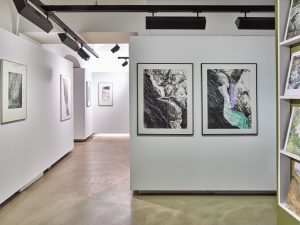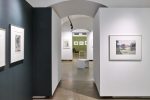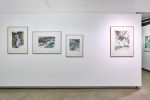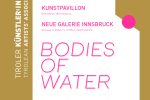BODIES OF WATER | NEUE GALERIE INNSBRUCK
Hannelore Nenning
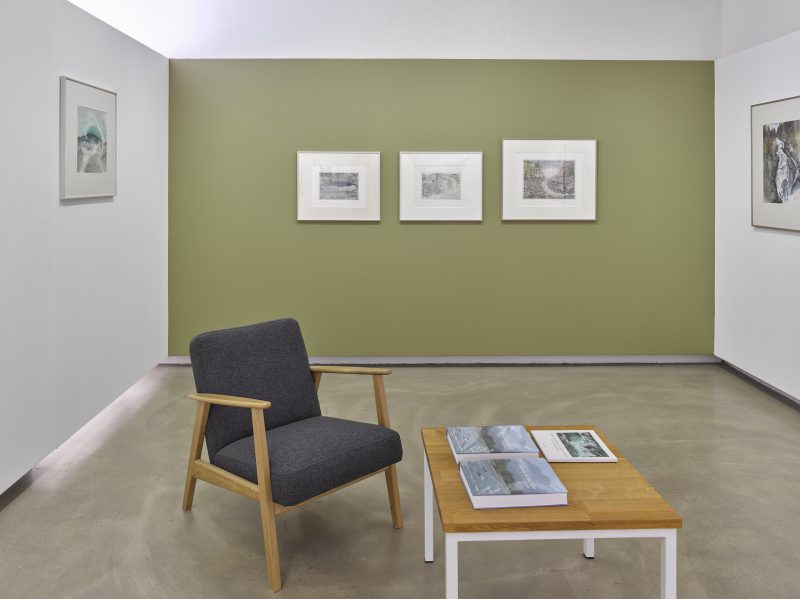
Hannelore Nenning
Enar de Dios Rodríguez
Elsa Salonen
curated by Petra Poelzl
Our bodies are also of air, rock, earth – even plastic at a growing rate – but figuring ourselves specifically, as bodies of water emphasizes a particular set of planetary assemblages that asks for our response right now. Astrida Neimanis
The direct effects of patriarchal capitalism on our planet are becoming increasingly clear in the shape of exploitation and progressive destruction. In the exhibition BODIES OF WATER, which can be seen across the two exhibition spaces, Kunstpavillon and Neue Galerie Innsbruck, the three artists Hannelore Nenning, Enar de Dios Rodríguez and Elsa Salonen investigate the current state of water landscapes from activist, animist and geopolitical perspectives. The title istaken from that of the book “Bodies of Water: Posthuman Feminist Phenomenology” by Astrida Neimanis, in which the feminist cultural theorist suggests an understanding of human bodies – contrary to the conventional conception of the individual subject – as fluid, permeable and watery. Anti-colonial, feminist and queer narratives flow copiously into future spaces of thought and action in order to soften the prevailing and less fluid ontological structure. Astrida Neimanis coins the term hydrocommons to refer to the interwovenness of planetary waters, which occupy about 70% of the planet‘s total surface area, and the human body, which consists of about 70-90% water. The idea that the body is autonomous and ends with the skin that encloses it, as well as that of the clear separability between humans and nature, is laid to rest, proclaiming actions and thought that transcend species.
Awareness of these interwovenness and the relationships that go with them is becoming an increasingly important tool for ensuring good survival on this planet, especially in light of the current water crises, which range from the privatisation of drinking water and water shortages to flooding and chronic contamination. The artists in the exhibition work with these interwovenness s in their respective artistic practicesby connecting with local river landscapes and the major oceans to imagine a desirable future in times of deep ecological, economic and social upheaval.
HANNELORE NENNING’s artistic exploration focuses primarilyon river landscapes and their slow disappearance. This becomes manifest in aquarelles, etchings and drawings in which she records the disappearing water landscapes in order to capture their beauty with her images. The artist, however, is not exclusively concerned with the visual experience, but rather, as a member of the ecology movement from the very beginning, she also pursues an activist approach.
In her artistic practice, ELSA SALONEN investigates the nature of the oceans from alchemist, animist, and scientific perspectives. All the colour pigments for the works shown in the exhibition were gathered by the artist from various sites. To make dyes, for example, Elsa Salonen has boiled algae and aquatic plants or ground sea shells, plastic refuse and pieces of dead coral that have drifted ashore. She views her pigments as collaborators, whose ‘experiences’ define the conceptual message of each work. Traditional Finnish rituals are reactivated as examples of a balanced relationship to nature; at the same time, the omnipresent microplastics have reclaimed a place within the natural colour palette.
In her works, ENAR DE DIOS RODRÍGUEZ is concerned with the appropriation of space and its socio-political and environmental consequences: although seventy per cent of the earth‘s surface is covered by the oceans, only a small part of the seabed has been mapped so far. However, in recent years, the interest in mapping such spaces has accelerated due to different economic, geopolitical and scientific objectives, revealing an apparent determination to create a “new continent” to explore and exploit under the sea.
BODIES OF WATER is part of a series entitled Dancing at the Edge of the World, curated by Petra Poelzl.
>>>Exhibition Booklet (German)
OPENING | Friday, 05.08.2022
6 pm | Hannelore Nenning | NEUE GALERIE INNSBRUCK
7.30 pm | Performance by Ursula Beiler | MEETING POINT: NEUE GALERIE INNSBRUCK
8 pm | Enar de Dios Rodríguez, Elsa Salonen | KUNSTPAVILLON
